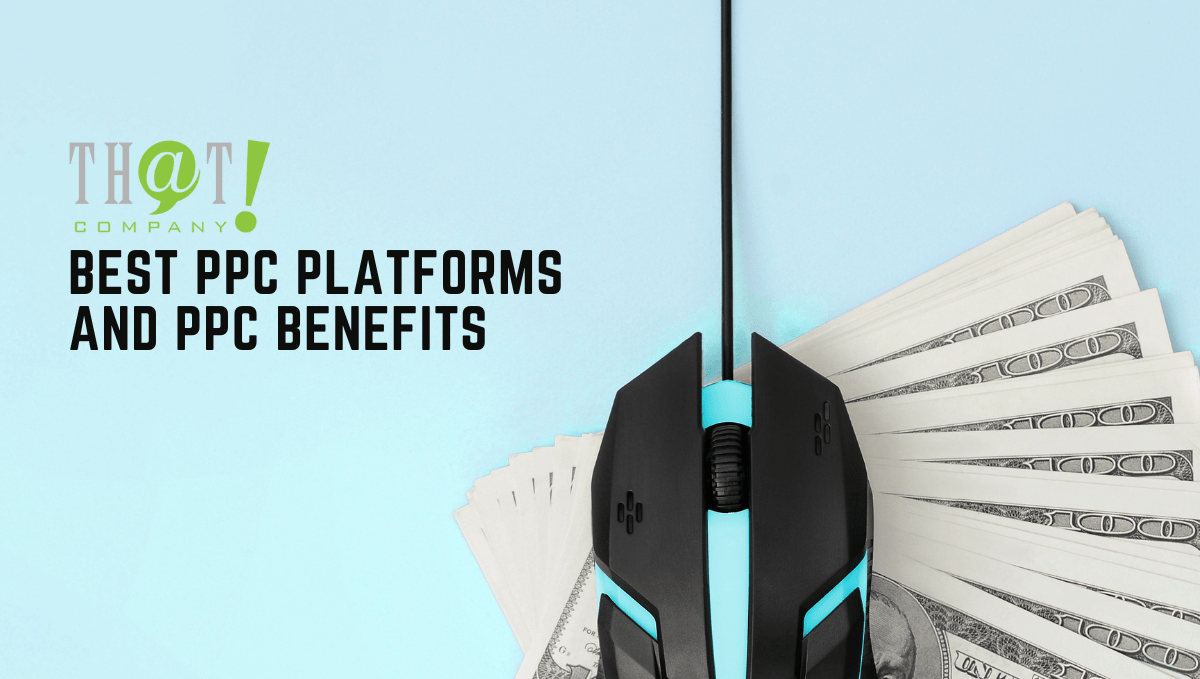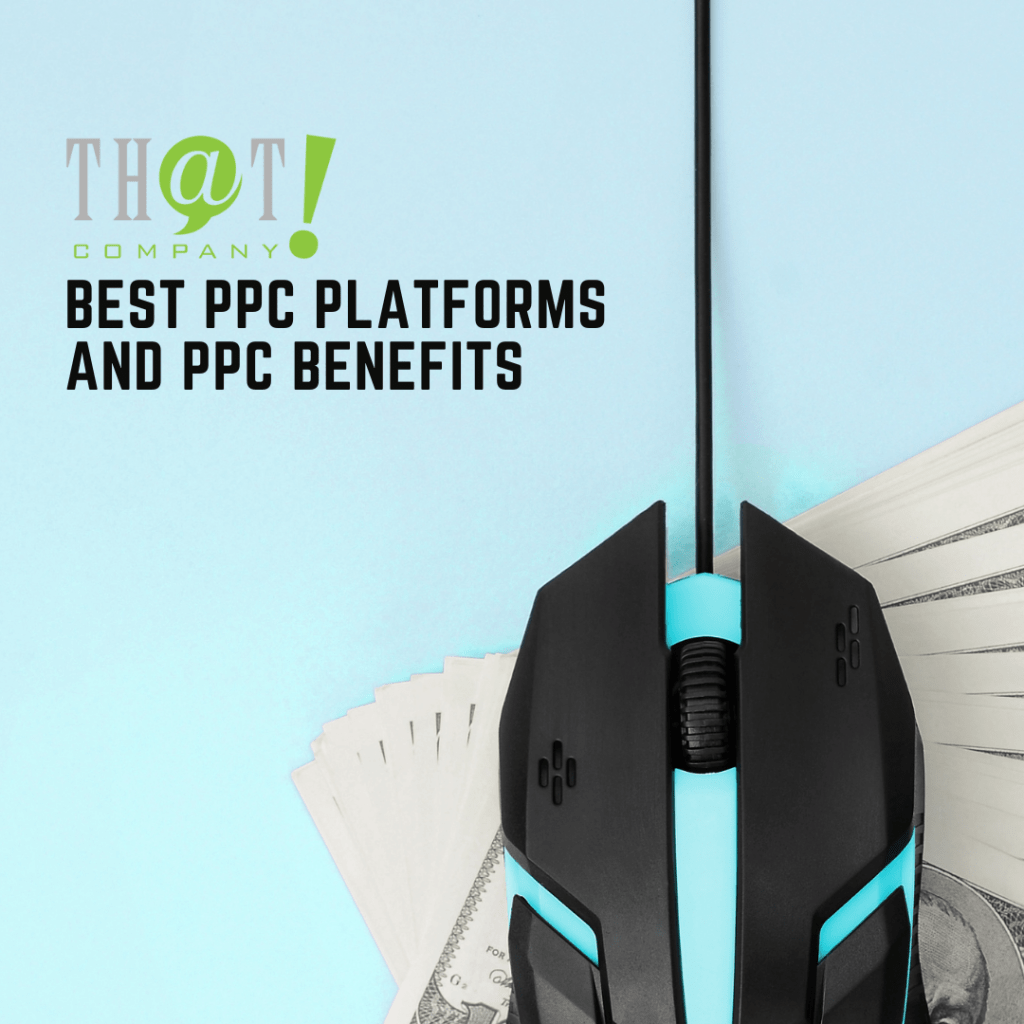
Once you understand the basics and the benefits of PPC, the next step is figuring out what platform you should advertise on. From search engines to social media, there are quite a few places you can invest your ad money into, but how do you pick?
There are a few things to consider when choosing a platform, including how easy they are to use, how much traffic exists on the platform, how much of that traffic is your target audience, keyword availability, and competition, the cost of advertising, and how much you can potentially earn (return on investment).
A lot of well-known ad platforms, like Google, generate a lot of traffic and are relatively simple to set up. However, some platforms that aren’t as popular might suit those who may not have as big of a budget. Here, we will be talking about what some of these PPC platforms have to offer.
Google Ads
 It should be no surprise that Google drives the most online traffic, being the most visited site on the entire internet.
It should be no surprise that Google drives the most online traffic, being the most visited site on the entire internet.
Because Google accounts for over 80% of the search engine market share, Google Ads has become a dominating force in online paid advertising.
With over 60,000 search queries conducted per second, Google definitely has a large audience that draws in advertisers. However, with a large audience also comes a lot of competition for keywords. So, Google is a platform with many users, but you will have to invest more money to get your ads out to them.
Bing Ads
As of 2022, Bing accounts for about 9% of the market share. If Google has a larger audience for higher ad costs, Bing is something of the opposite, with a smaller relative audience but cheaper ads. Bing also has a higher CTR (click-through-rate) than Google due to less competition.
Facebook Ads
Facebook is the most searched word on Google in the U.S and ranks 2nd globally. Facebook is also the most popular social media site, with 2.8 billion monthly users. If your target audience exists more on Facebook, you may want to focus your ad efforts here. Facebook is a popular option because of how specific you can get with your targeting. You can target users based on age, location, education level, interests, user behaviors, income, etc. Facebook Ads is known for CPM (cost-per-mille) rather than CPC paid ads.
Because Facebook and Instagram are under the same parent company, you can also add Instagram ads to your Facebook ad campaigns. Facebook supports native ads, so your ads on the platform will come into and blend with the social feed.
AdRoll
Retargeting platforms like AdRoll are those that serve ads to previous visitors of your website. The advantage of AdRoll over retargeting campaigns that can be accomplished on other platforms is that it can show ads both on social media sites like Facebook and Google.
[bctt tweet=”Once you understand the basics and the benefits of PPC, the next step is figuring out what platform you should advertise on.” username=”ThatCompanycom”]RevContent
 RevContent is built for advertising. This tool promotes your content, specifically using PPC campaigns. It works a lot like a guest post would in that your content is shown on a website that isn’t yours. The difference is that this is an ad and not a blog post. Keyword bidding is still in place, and the tool chooses relevant website content beside which to position your ad. The best advantage of RevContent is low CPC and high engagement from website traffic.
RevContent is built for advertising. This tool promotes your content, specifically using PPC campaigns. It works a lot like a guest post would in that your content is shown on a website that isn’t yours. The difference is that this is an ad and not a blog post. Keyword bidding is still in place, and the tool chooses relevant website content beside which to position your ad. The best advantage of RevContent is low CPC and high engagement from website traffic.
Now that you have some ideas of where to go to look for a PPC platform let’s look at some of the benefits of PPC.
Benefits of PPC
Cost-Effective
Advertisers have control over how much money they want to put into their PPC ad campaigns. They have the option to manually set their maximum bid in CPC ad auctions.
With PPC, you only pay when people click your ad, and since PPC yields higher conversions than SEO, it’s definitely worth it.
Fast Results
SEO or organic ranking can cost less than PPC campaigns. However, it can take quite a while to optimize your site and its content to start ranking high on search engine results pages. Some businesses do not have the luxury of time to build up their own SEO knowledge, rise in the search rankings, receive clicks, and get conversions. With PPC ads, it won’t take long after your campaign launch for your website to show up among the top results on SERPs.
Note: While companies can hire white label SEO experts or white label PPC services to speed up the process, it could still take weeks to months to rise to the top of the results pages organically, while PPC brings in the leads you need now.
Full Control
Aside from being able to decide their own budget, where their ads are placed, and what keywords to target, PCC provides advertisers the comfort of control and stability in other aspects.
For one, advertisers can run A/B split tests using different ads to determine which yields the better result. Successful ads can then be scaled, or advertisers can stop running those that are underperforming.
PPC ads are hardly affected by search engine algorithm changes, which makes PPC advertising more stable and consistent than organic ranking. This is one less thing to worry about if you choose PPC.
Audience Targeting
 With PPC, advertisers can have their ads directly shown to their target audience. You don’t have to worry about cold audiences because you go straight to the warm and hot zones where searchers are purchase-ready.
Bid on keywords and key phrases that your target customer would be most likely to search for. This means using the right keywords but also looking at their demographic and past online activity.
Retargeting campaigns is one of the benefits of PPC. Not all the people who click on your ad and get redirected to your landing page will turn into paying customers. Retargeting campaigns show ads to previous website visitors, increasing the chance of a conversion.
With PPC, advertisers can have their ads directly shown to their target audience. You don’t have to worry about cold audiences because you go straight to the warm and hot zones where searchers are purchase-ready.
Bid on keywords and key phrases that your target customer would be most likely to search for. This means using the right keywords but also looking at their demographic and past online activity.
Retargeting campaigns is one of the benefits of PPC. Not all the people who click on your ad and get redirected to your landing page will turn into paying customers. Retargeting campaigns show ads to previous website visitors, increasing the chance of a conversion.






























